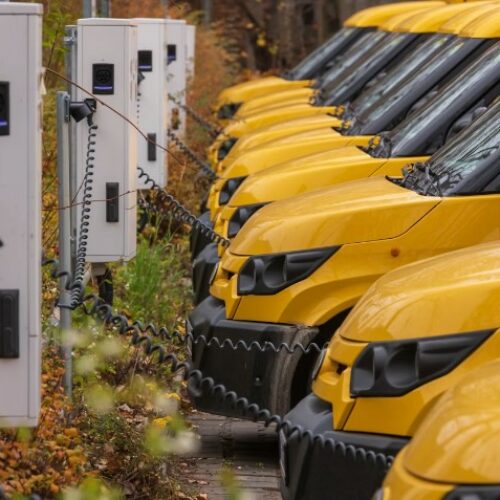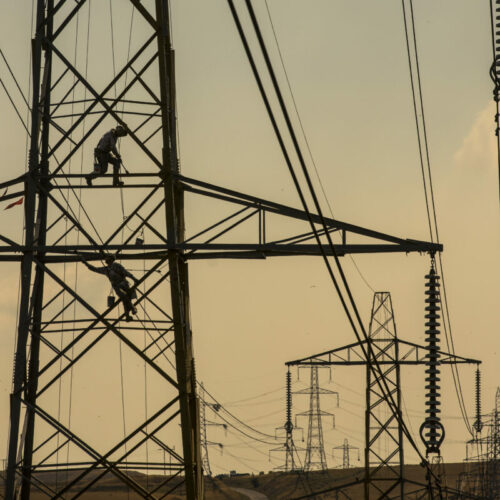Zenobē Energy’s recent first of its kind debt structure is giving the company a “good advantage”, co-founder and director Nicholas Beatty said as the company looks to grow its fleet offering while also pursuing second life and utility-scale battery storage.
“The longer you have debt, the longer the amortisation profile is, which means that it’s better for funding long term assets, and you’re bringing the funding closer in line with how long the assets will be able to operate,” Beatty told Current±, with £116 million of the £141 million structure being 15-year debt.
The other £125 million, meanwhile, is a revolving capital facility and a working capital facility with a five year length.
“That gives us the flexibility to continue to grow the business and use that debt effectively to finance new contracts. Then what we aim to do is to build those new contracts up to say £90, £100 million or whatever it is, and then refinance them into the term debt portion,” he said.
While this sort of structure does exist for assets such as trains, Beatty said it’s completely new for buses- the target of Zenobē’s fleet offering, which includes providing bus operators with financing for charging infrastructure, stationary battery storage located in bus depots for overcoming grid constraints, batteries on the vehicles and the vehicles themselves.
He said that when it comes to financing something such as a train, there’s plenty of information on how the trains will operate etc, but with electric buses that information isn’t available. Zenobē has therefore done a large amount of due diligence work with investors, making them comfortable that electric buses will be able to operate for 15 years.
While this new funding is specifically to go towards Zenobē’s fleet electrification offering, the company has other expansion goals for the rest of its business. The company currently has around 175MW of utility-scale battery storage either in construction or constructed in the UK, with a number of other contracts that are going to be coming up- with an initial focus of getting to 1GW.
Alongside this, the company is also increasingly doing more work with second life batteries- with potential there for a variety of applications and scales.
One of the reasons Zenobē’s fleet electrification offering includes the stipulation that Zenobē owns the electric bus batteries is to allow for second life applications.
When an electric bus battery is replaced with a new battery, Zenobē can take the original battery and make it work for a further five years or so, generating additional income as part of a second life application.
“We’ve got second life batteries that are up and operating,” Beatty said. “That’s an important part of our future development.”
The company sees use cases for a variety of scales for second life, with the interesting element of a battery that comes off a bus is that it’s been designed to move.
As such, an application Zenobē thinks is particularly interesting is combining these batteries with inverters in a container and using them to replace diesel generators for things like events for music, shows, TV filming etc.
“That’s a market which is increasingly concerned about its carbon footprint; if you’re going off to a music festival, you don’t want to be sat next door to a diesel generator pumping out black fumes. So the organisers are very keen on this, and that’s a very good example of an application for us.”
Other applications for second life batteries include things like the lead acid batteries used in mobile telephone towers, which need to be replaced on a particularly regular basis, with Beatty suggesting this might be every year or two.
“With these second life batteries, we can put them in there and they can last for five+ years. That takes down the cost of maintenance,” he explained.
Additionally, there are also opportunities for utility-scale second life installations co-located with renewables.
While the battery that comes off the bus and is repurposed for a second life application will have degraded somewhat, Beatty said that with the size of the batteries– with two and a half buses being equivalent to around 1MW – even if they’re only at 75% state of charge, that’s still 750kW from two-three buses.
“That just gives you an idea of the scale. We’ve got about 300 of them at the moment, so that’s potentially 100MW, just the buses that we own and operate.”
Overall, Zenobē’s goals remain firmly centered around growth both in the UK and abroad.
“We’ve got very firm roots here in the UK,” Beatty said, although he added that the company is expanding internationally.
“We’ve got operations in Australia and that part of the world and we expect to expand into new markets,” he finished.




